We hate to break it to you, but your mom was right—you really should be eating your vegetables. After all, a diet rich in veggies can reduce the risk of heart disease, lower blood pressure, and prevent certain types of cancer. “Pretty much everyone could benefit from including more vegetables in their diets, and most people fall short of daily recommended intakes,” says Alissa Palladino, RDN, CPT, an Atlanta-based nutritionist. With so many varieties to choose from, you may be wondering which are the healthiest vegetables to eat.
The answer? Experts agree they all offer something nutritious. No one vegetable provides all of the nutrients you need to be healthy, so eating a good mix is just as important as consuming enough.
“All those vibrant colors represent different health-promoting phytonutrients,” says Mackenzie Burgess, RDN, a recipe developer at Cheerful Choices. “For example, purple veggies like eggplants are rich in anthocyanins, which help protect the cells in our body from damage.”
The CDC recommends eating two to three servings of veggies a day, and a typical serving is defined as either one cup of raw produce, like baby carrots or cucumber slices, or 1/2 cup of cooked greens (think: sautéed spinach or roasted cauliflower), according to Palladino.
If you’re curious which vegetables have the best nutritional profile, here are 15 choices with the highest fiber, vitamin and antioxidant content, according to registered dietitians and science.
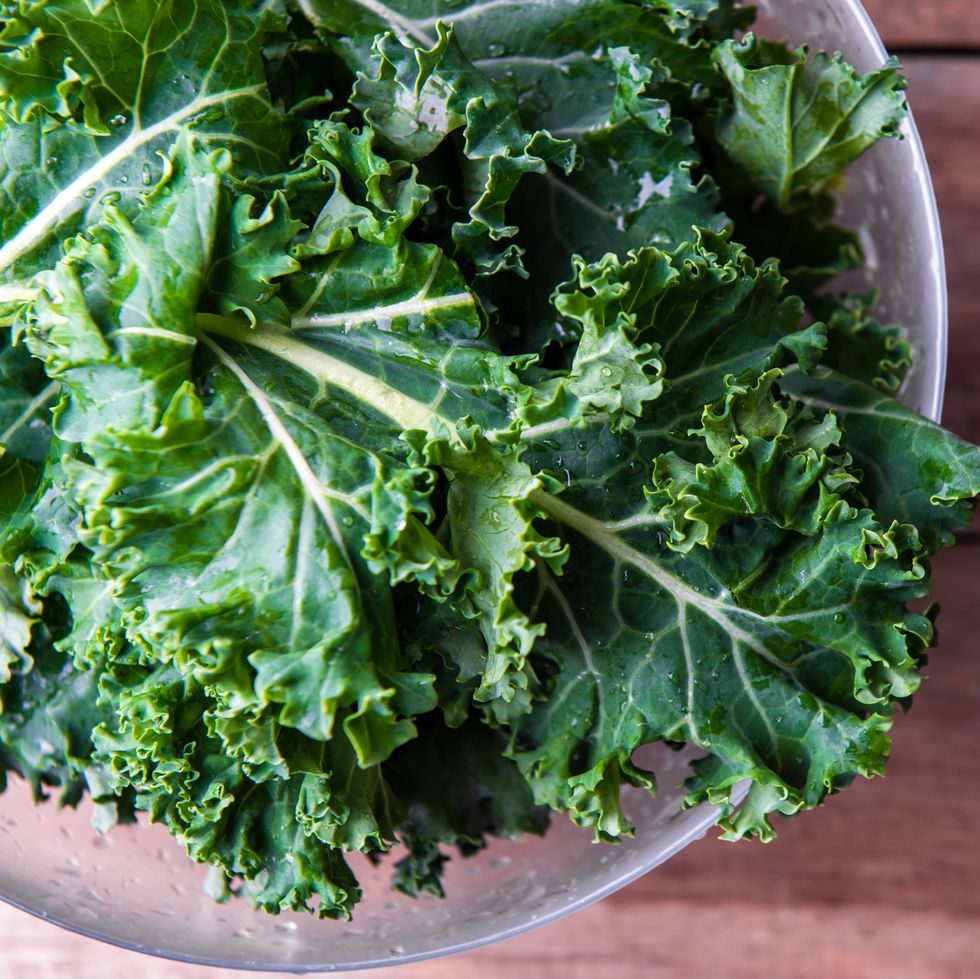 HUIZENG HU//Getty Images
HUIZENG HU//Getty ImagesKale
Kale is often promoted as a nutritional powerhouse, and for good reason: It’s high in vitamins A, C, and K, and may even help slow cognitive decline with aging, Burgess says.
While you can enjoy it by adding a handful to a soup or stew, eating it raw is the best way to ensure you’re getting all the nutrients it has to offer. “Kale retains most of its antioxidants when eaten raw,” explains Burgess. Not a fan of the bitterness? Massaging it with a bit of oil and salt will improve the flavor, she suggests.
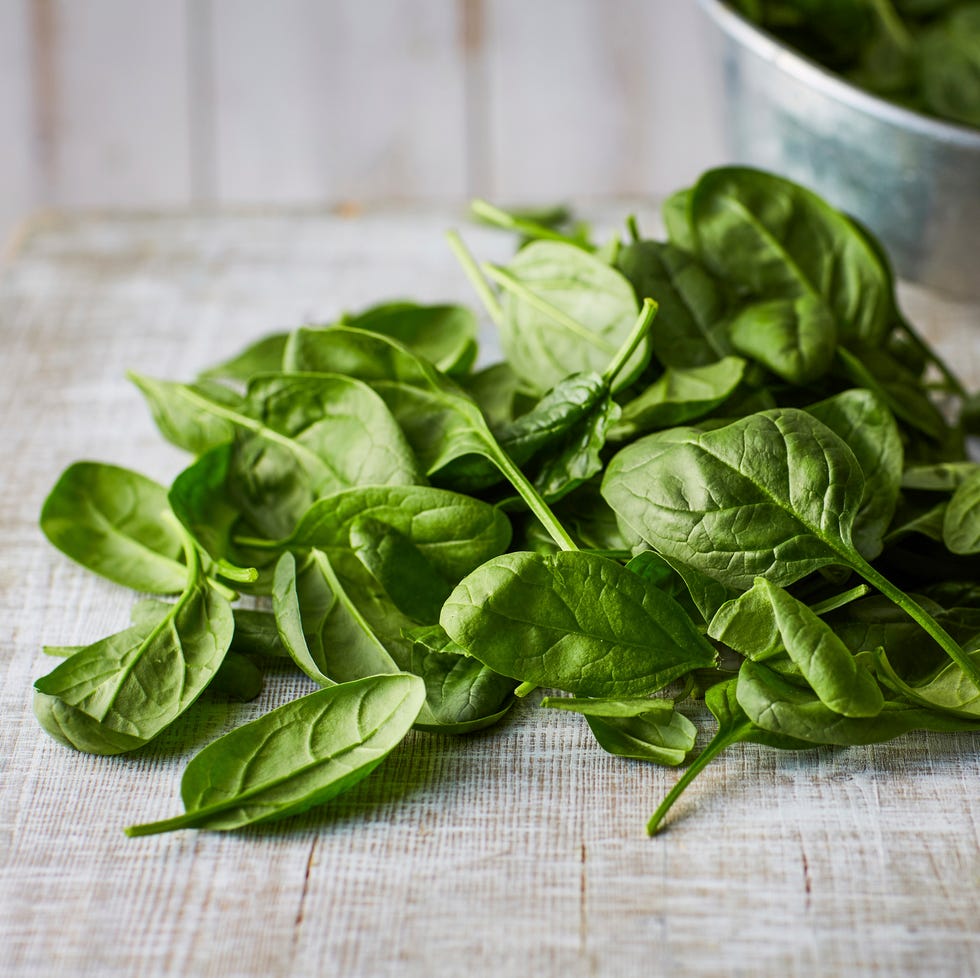 Westend61//Getty Images
Westend61//Getty ImagesSpinach
Spinach is a nutrient-dense veggie that packs tons of vitamin C, iron, folate, potassium, and nitric acid, which has been shown to lower blood pressure and decrease the risk of heart disease.
You can enjoy these leaves raw or cooked. Note that applying heat may result in some vitamin A and C loss, but the process can help decrease oxalates, too much of which can lead to kidney stones, and prevent their absorption, says Burgess.
 Dave Le//Getty Images
Dave Le//Getty ImagesSwiss Chard
It’s hard to pick just one nutrient to highlight with Swiss chard because it’s full of so much good stuff, Palladino says. “But the amount of iron is notable—22 percent of the daily value in just one cup,” she says.
The type of iron found in plants is better absorbed when paired with vitamin C, and luckily Swiss chard has that built in. ICYMI, iron is an essential mineral needed to form red blood cells, which transport oxygen throughout the body for energy production. And this veggie is also great for improving cardiovascular health.
Steam, sauté, or toss a few stalks into a smoothie to optimize its nutritional value. A friendly reminder: Overcooking it can strip it of its nutrients, so you definitely want to avoid that.
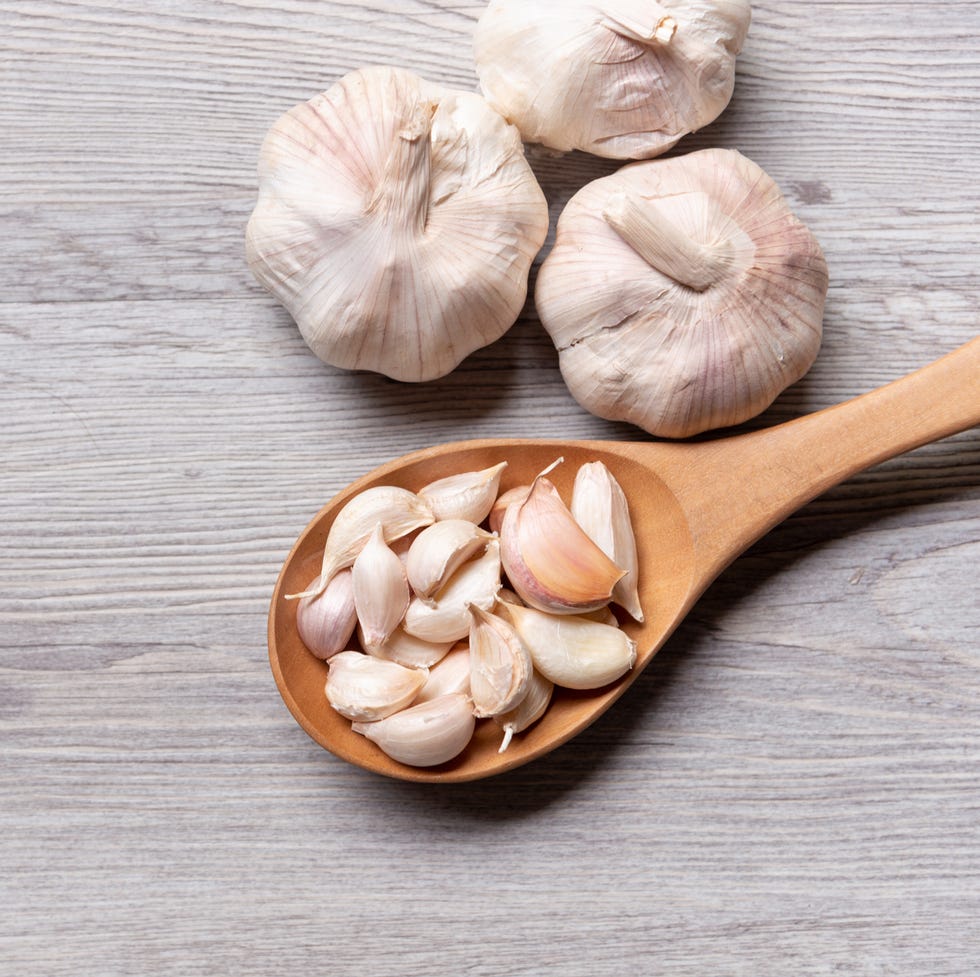 Thanit Weerawan//Getty Images
Thanit Weerawan//Getty ImagesGarlic
Garlic has been used as a medicine for centuries, and that’s because it contains many beneficial compounds, including polyphenols, flavonoid, and allicin. Thanks to them, garlic has been shown to reduce oxidative stress, decrease inflammation, and lower cholesterol. So, chop up a few cloves and add it to your favorite stew, sauce, or curry. Or rub a few raw cloves over your bread to elevate your avocado toast.
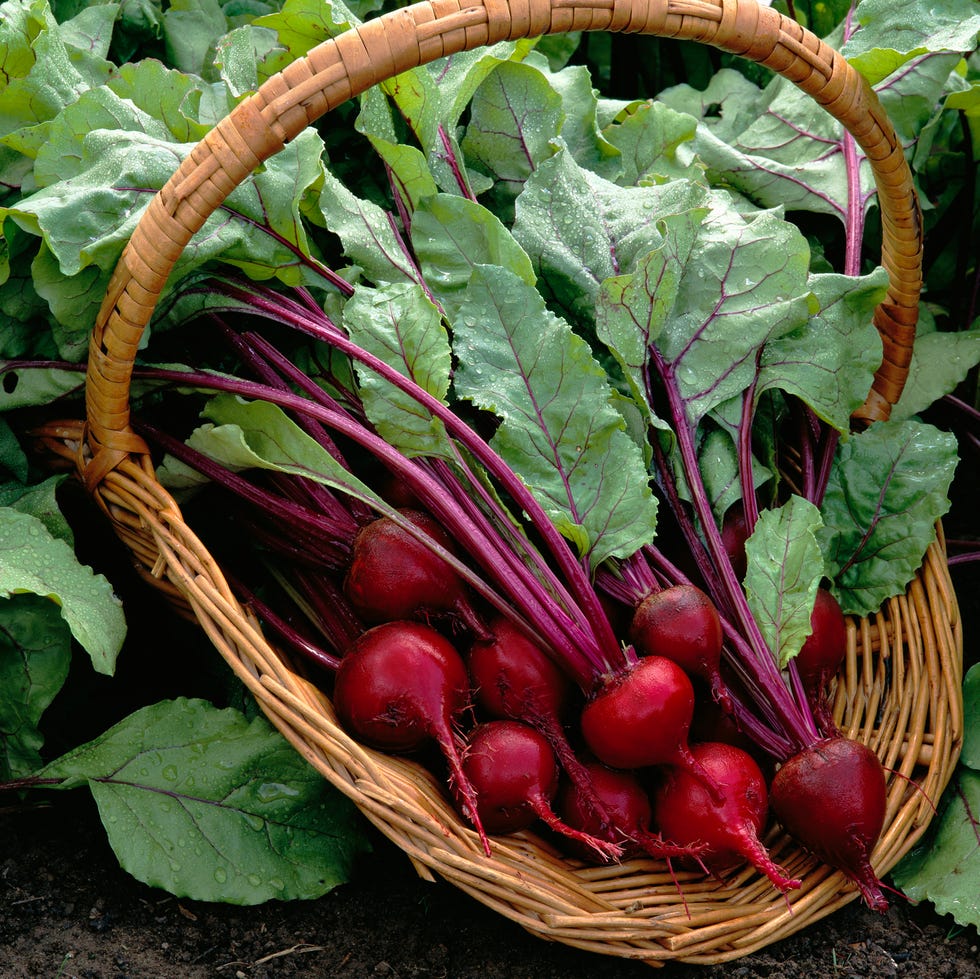 Roy Morsch//Getty Images
Roy Morsch//Getty ImagesBeets
Beets are a great source of folate, manganese, potassium, and immune-boosting vitamin C, but most notably, beets contain a high concentration of dietary nitrates. These help expand blood vessels and enhance blood flow, Palladino says, and research suggests nitrates can help lower blood pressure. “This is beneficial for people with hypertension and endurance athletes seeking performance enhancements,” she says.
And eating this root veggie raw is the best way to preserve all those important nutrients. Throw them into a smoothie or add a few slices to a salad.
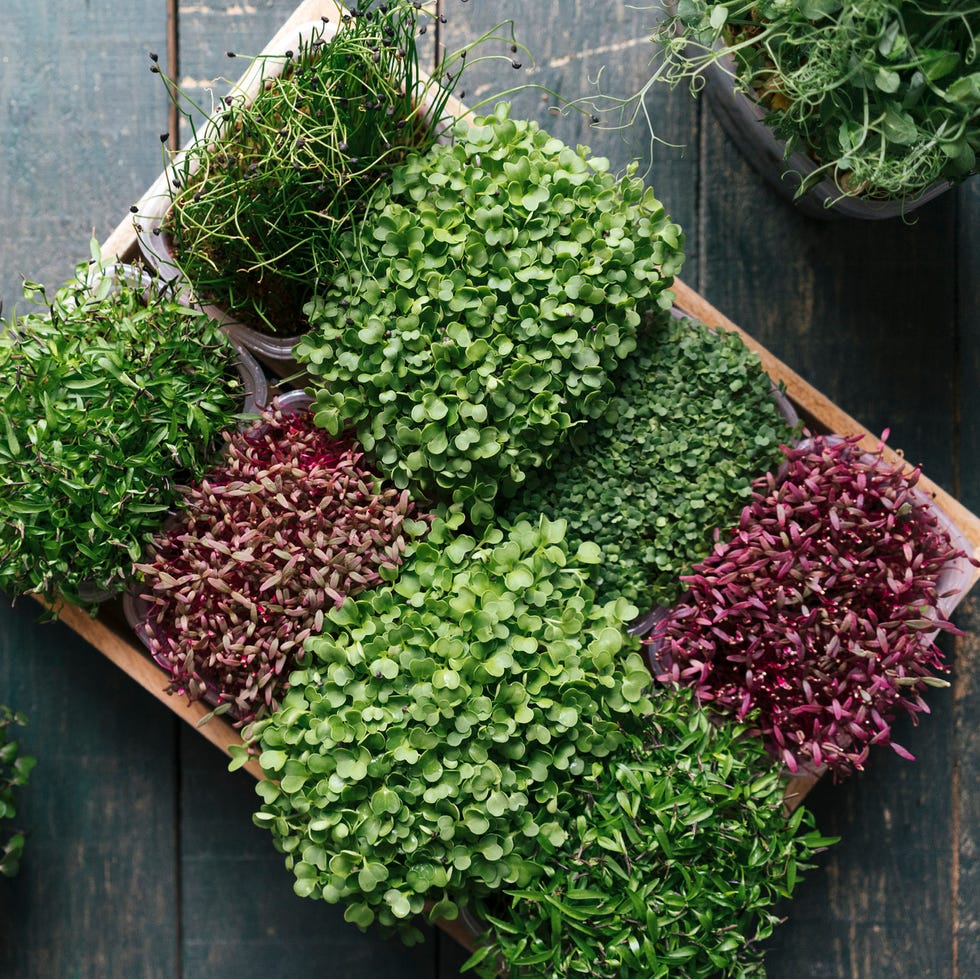 Westend61//Getty Images
Westend61//Getty ImagesMicrogreens
Microgreens are picked before they’re fully mature, and they often provide more vitamins, minerals, and phytochemicals than their mature counterparts, making them a great way to boost the nutrition of any meal, per Burgess. Microgreens also possess anti-inflammatory and anti-cancer properties. They’re best consumed raw and make a great salad or pasta topping.
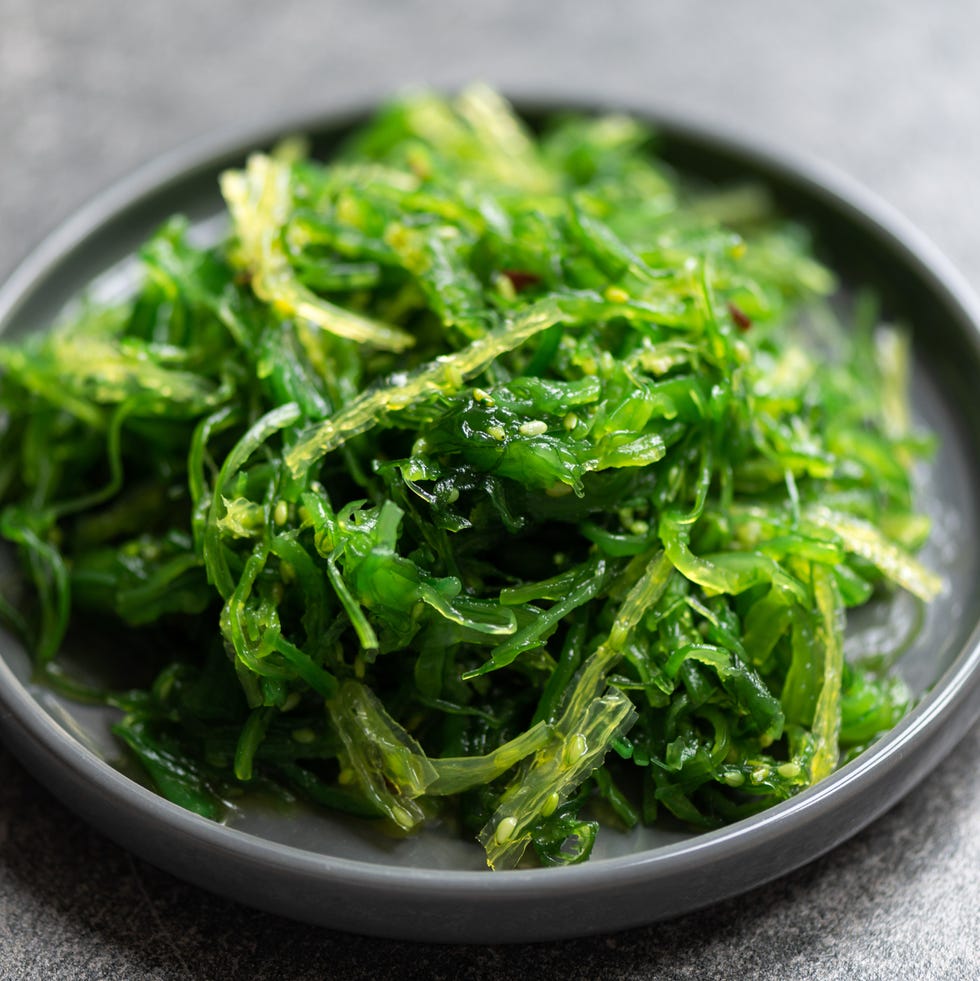 Anna Denisova//Getty Images
Anna Denisova//Getty ImagesSeaweed
While there are many different types of seaweed, most are excellent sources of iodine, which is needed to make thyroid hormones, Palladino says. They regulate many essential body processes, including energy metabolism and protein synthesis. Seaweed also contains large quantities of minerals and alginate, which is a type of dietary fiber reported to reduce blood pressure.
Because most seaweed comes already dried, she recommends sprinkling it on other foods like soups, bowls, eggs, or smoothies to add flavor, texture, and a nutrient boost.
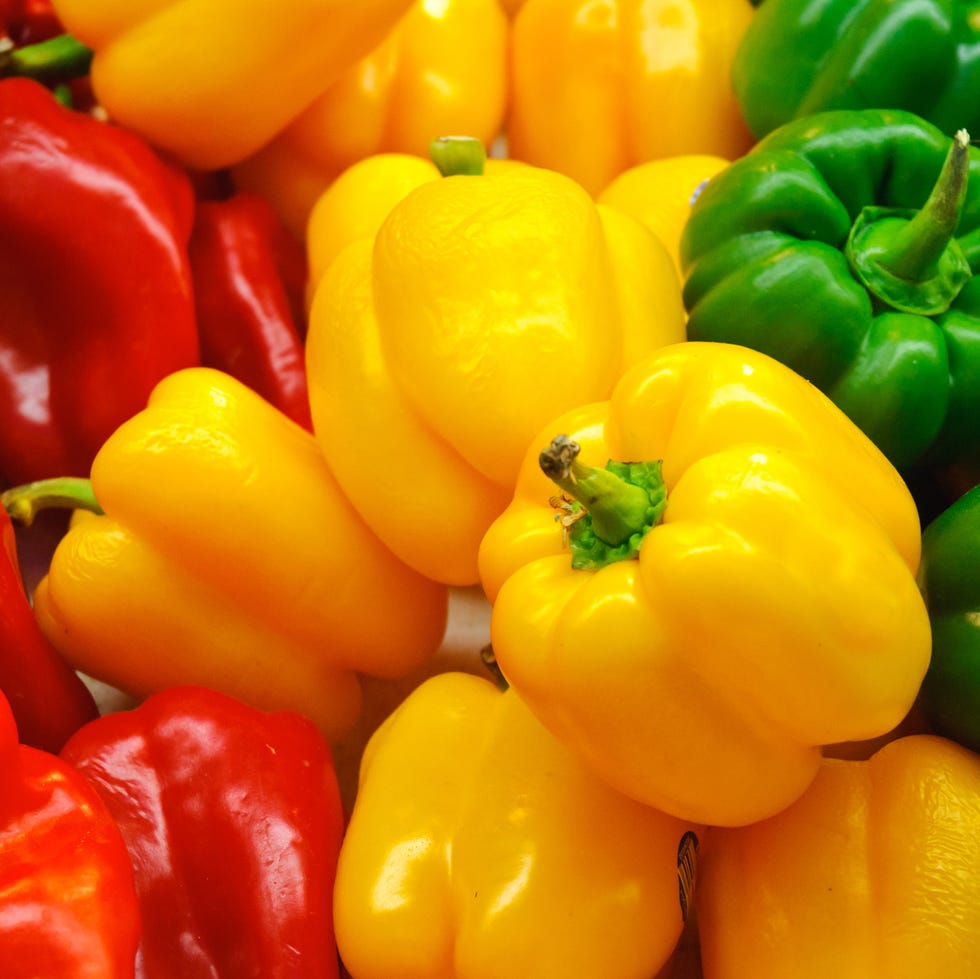 Amit Basu Photography//Getty Images
Amit Basu Photography//Getty ImagesBell Peppers
Bell peppers are a great source of vitamins C, K, A, and E, as well as potassium and folate. “They all have their benefits, but red bell peppers in particular have one and a half times the vitamin C and twice the amount of folate compared to green bell peppers because they are left on the vine for a longer period of time to mature and ripen,” Burgess explains.
Bell peppers are also rich in antioxidants and have been found to potentially reduce inflammation and pain. Cooking them does reduce the vitamin C content, but making stuffed peppers, adding them to chili, or mixing them into a salad are all great ways to enjoy these colorful veggies.
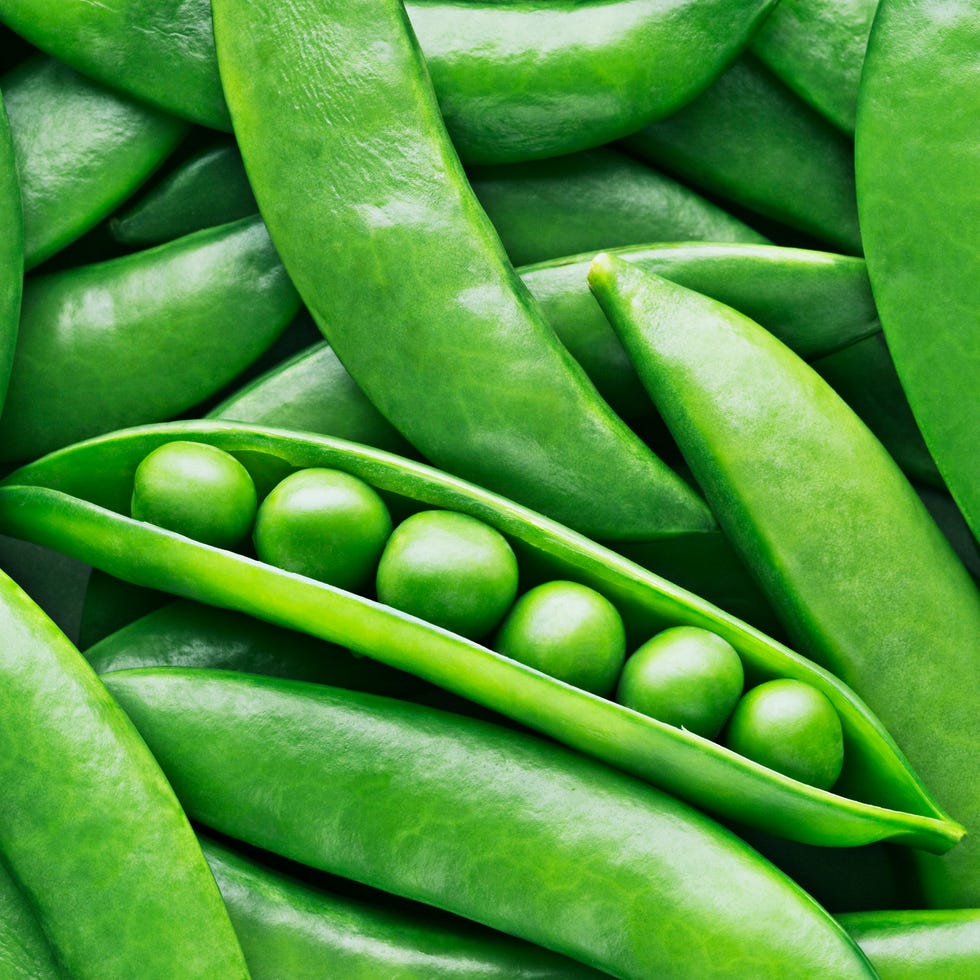 Martin Barraud//Getty Images
Martin Barraud//Getty ImagesPeas
Peas are a great source of plant-based protein compared to most vegetables, says Palladino. “It’s possible, but harder, to meet protein needs on a strict plant-based or vegan diet, and as these dietary patterns are becoming increasingly popular, peas can be an excellent option,” she says.
They can easily be incorporated into stir-fries alongside other veggies and brown rice, or in grain bowls. And peas are known to help improve kidney function and those with kidney disease.
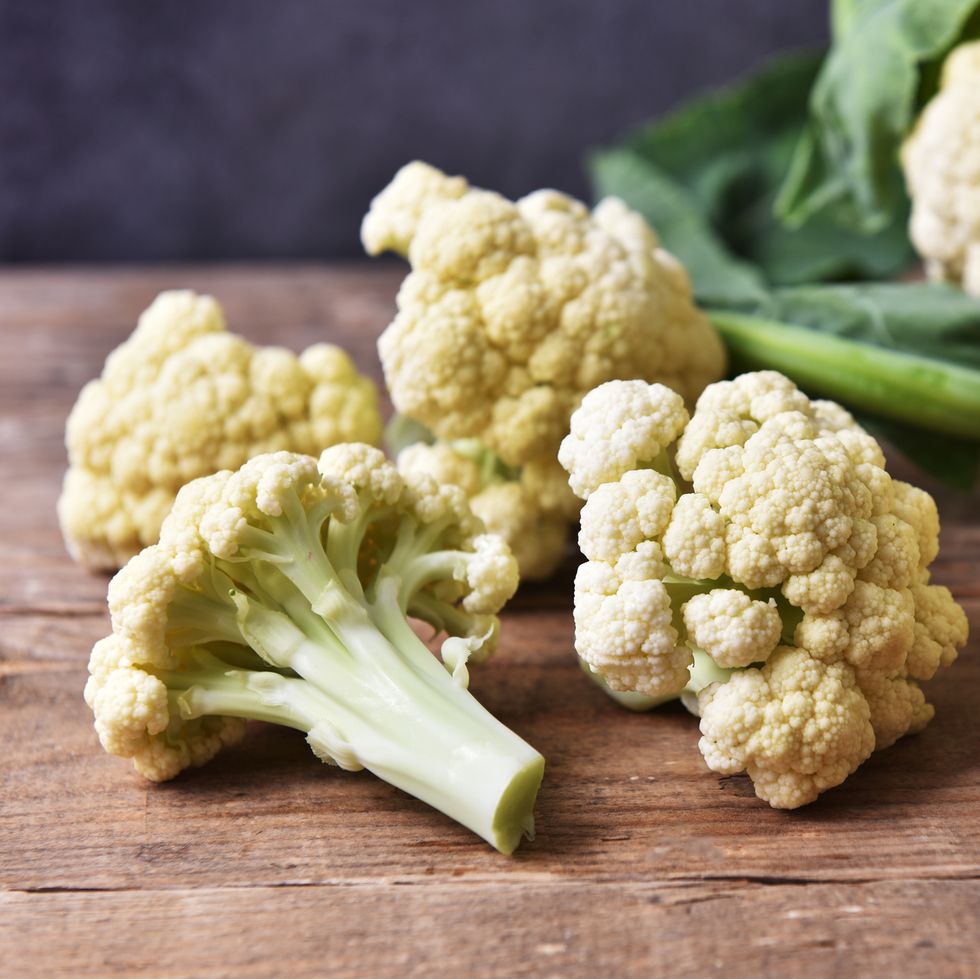 HUIZENG HU//Getty Images
HUIZENG HU//Getty ImagesCauliflower
Cauliflower is an amazing, versatile veggie because it’s packed with high amounts of vitamin C, the antioxidant carotenoid, and glucosinolates, Burgess says.
Choline is another nutrient found in cauliflower—with one cup providing about 11 percent of the daily choline needs for women. It may protect against fatty liver disease.
Since cauliflower-based products have exploded in popularity in recent years, Burgess recommends grabbing a Cali’flour Foods flatbread or pizza crust and topping it with your favorite veggies and protein. You can also ground up boiled cauliflower and add it to sauces and soup, or use it as a rice substitute rice in dishes.
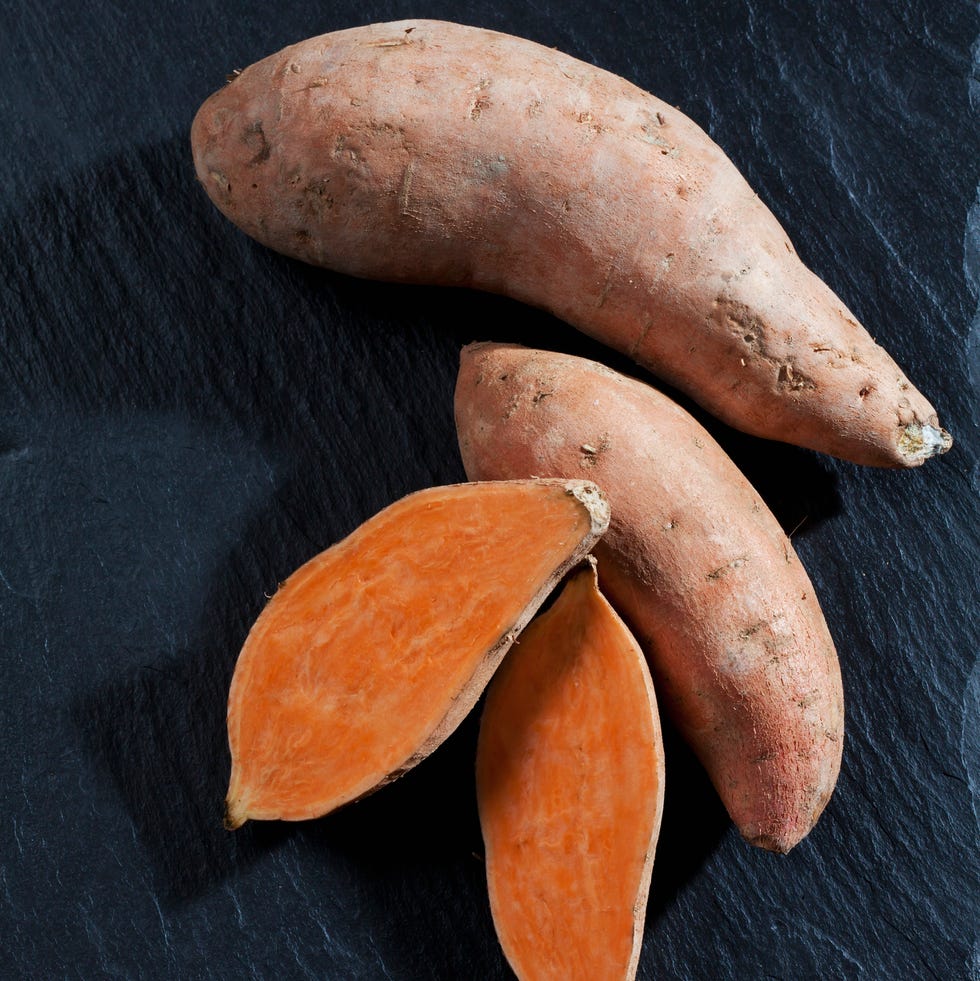 Westend61//Getty Images
Westend61//Getty ImagesSweet Potatoes
Like other orange-pigmented vegetables like pumpkins and carrots, sweet potatoes are packed with vitamins A, C, and B6, manganese, and twice the potassium of a banana! The root vegetable is also a rich source of beta-carotene, an antioxidant associated with a host of health benefits, Palladino says. Purple sweet potatoes have been linked to prevention or delay in the development of cataracts and macular degeneration. Opt for steaming or boiling them to keep all those great nutrients in.
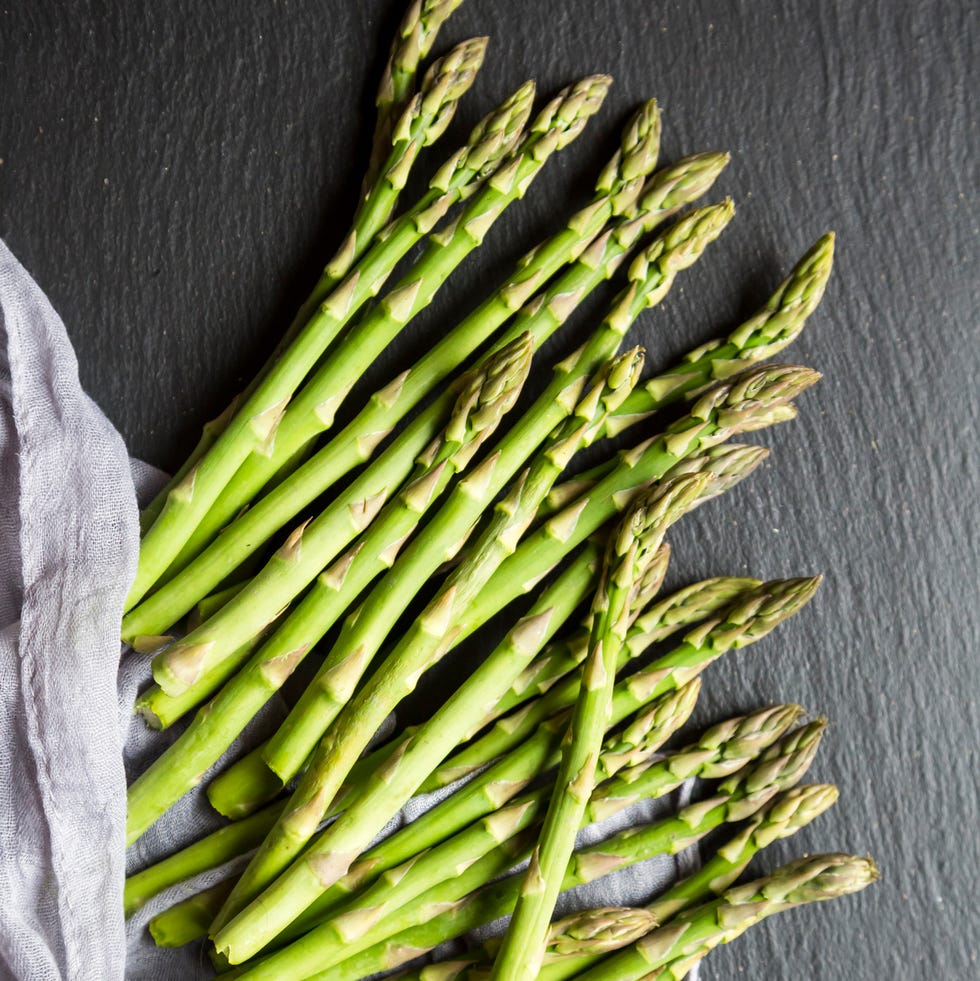 Westend61//Getty Images
Westend61//Getty ImagesAsparagus
Low in calories and high in fiber, asparagus is packed with vitamins A and C, iron, and potassium. But most notable is its vitamin K content, says Palladino. “Vitamin K is a fat-soluble vitamin needed for blood clotting, bone health, and a number of other biological processes,” she notes.
Asparagus is also considered a great addition to your diet if you’re pregnant because of its rich folic acid content, which can help aid in the proper development of a fetus and reduces the chances of birth defects.
When it comes to preparing the veggie, roasting or steaming it is the best way to preserve all those essential vitamins and minerals.
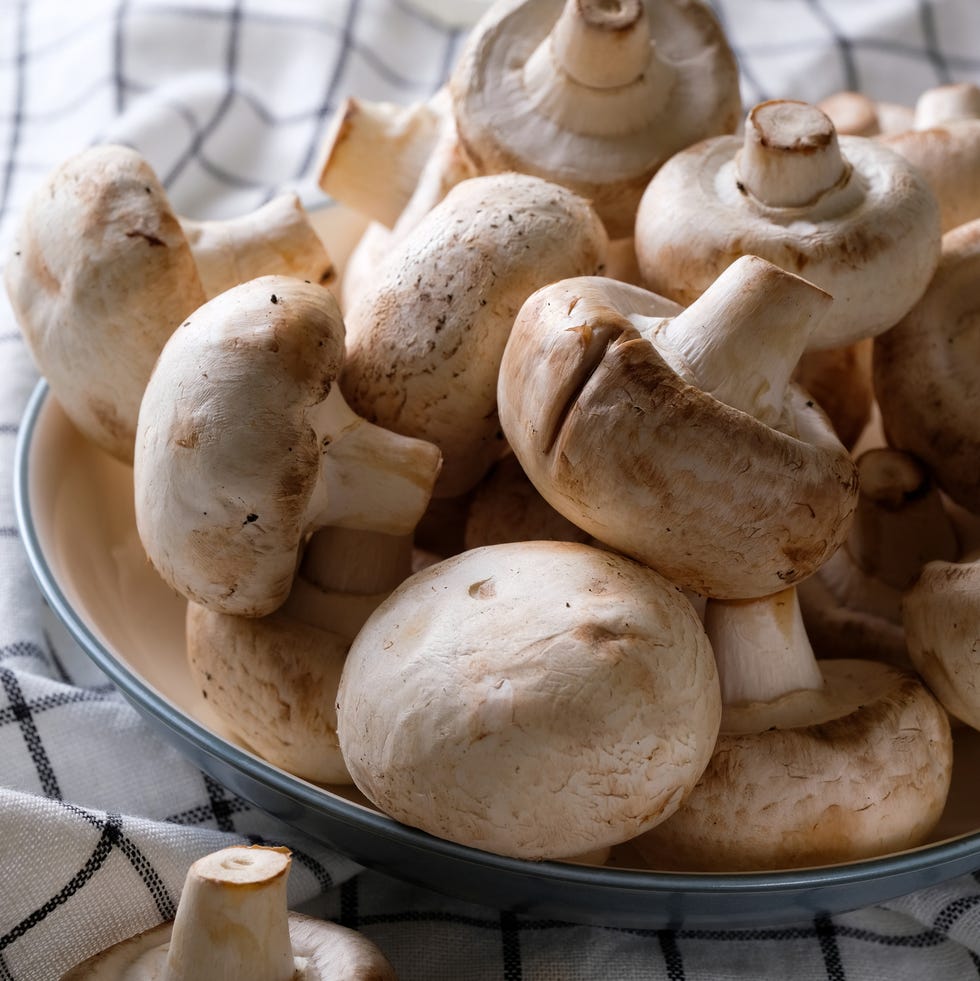 Aleksandr Zubkov//Getty Images
Aleksandr Zubkov//Getty ImagesMushrooms
Mushrooms are a nutritional powerhouse for many reasons. They are rich in nutrients while low in calories. Some research shows mushrooms may also help with weight management, immunity, and preventing certain diseases like cancer.
“Mushrooms are the only food in the produce section that features vitamin D,” says Burgess. “Just a handful of UV-exposed mushrooms can be an excellent source of vitamin D, which is very helpful considering over 40 percent of the population is deficient.”
Since mushrooms are better for you when they’re cooked, she recommends caramelizing a big batch and storing them in the fridge to to pair with a variety of meals like quinoa salads, taco bowls, and burgers.
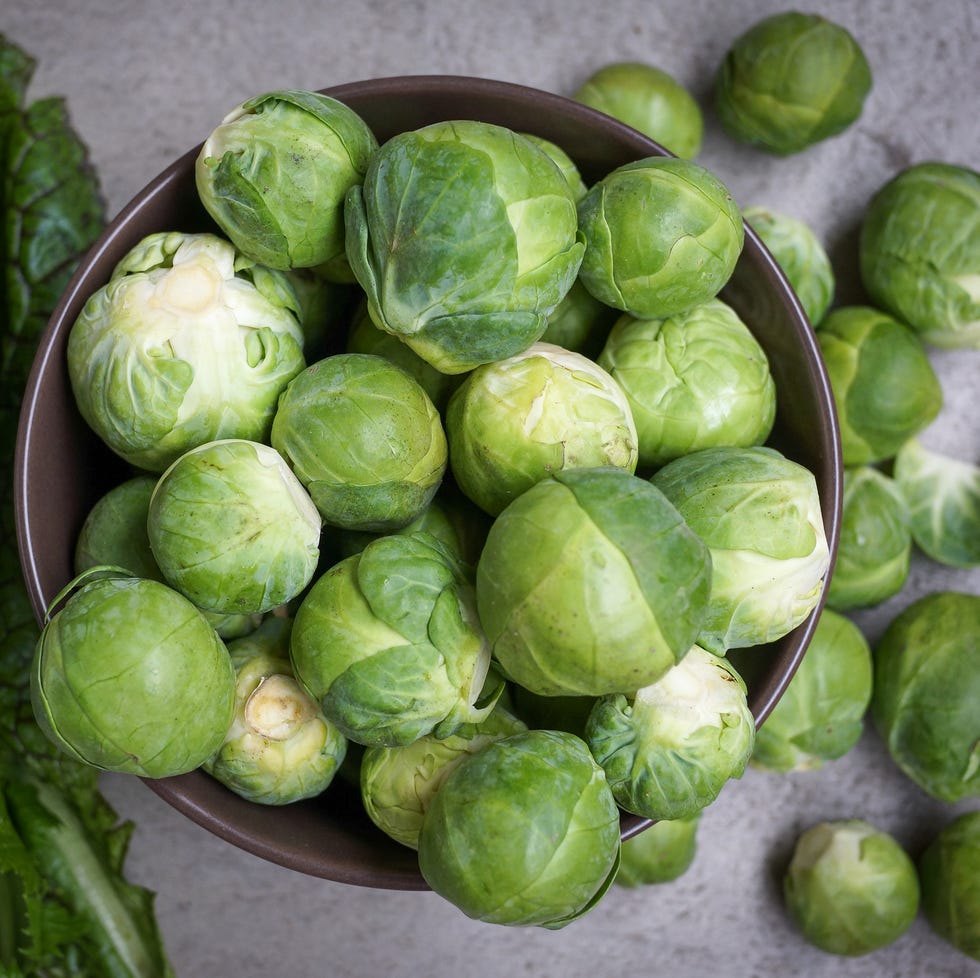 Ute Mangold / 500px//Getty Images
Ute Mangold / 500px//Getty ImagesBrussels Sprouts
Along with other cruciferous vegetables like cauliflower and broccoli, Brussels sprouts are especially high in cancer-protective antioxidants, including sulforaphane, says Palladino. These mini cabbages provide a healthy dose of vitamin C and help improve immune system function and decrease inflammation. Studies have also shown that consumption of these bulbs can reduce the risk of atherosclerosis, thickening or hardening of the arteries.
Frying or roasting them for too long can strip them of their nutrients, so enjoy them raw in a shaved Brussels sprouts salad topped with cranberries and walnuts, or air fried.
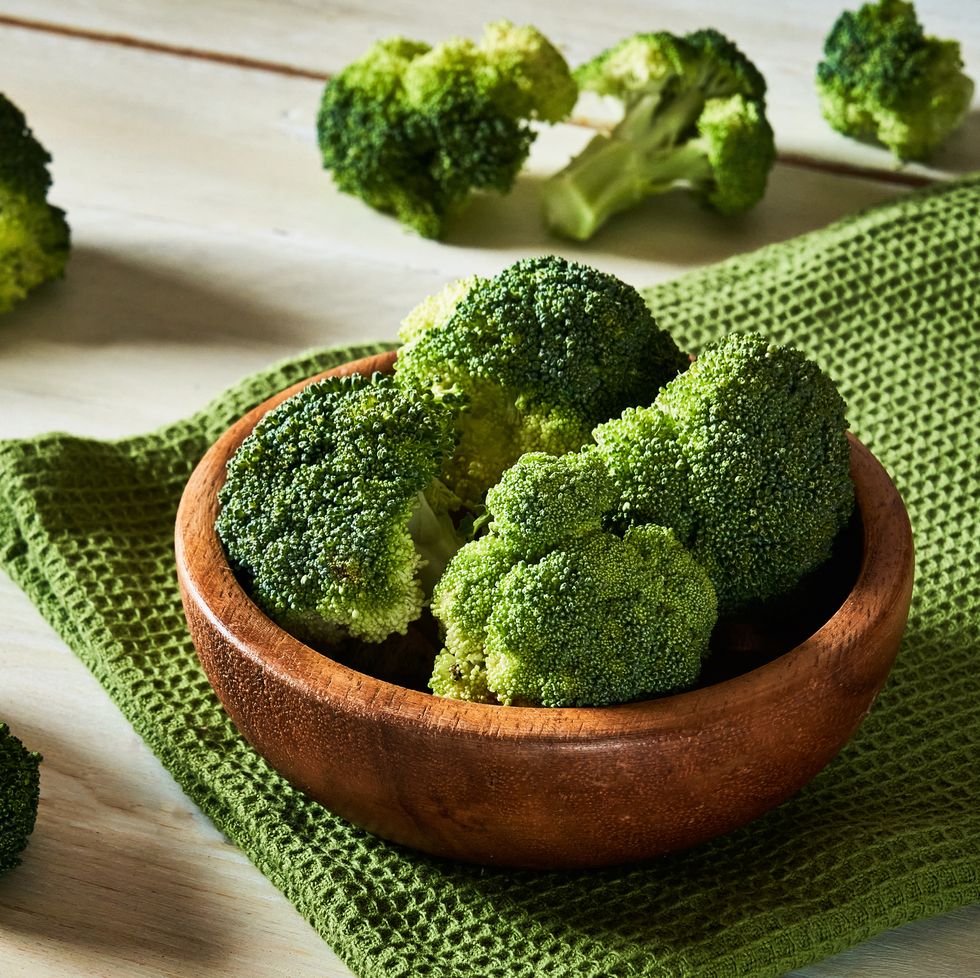 Helen Camacaro//Getty Images
Helen Camacaro//Getty ImagesBroccoli
Of course broccoli makes the list. It’s high in many important vitamins and minerals, particularly vitamin C and K, potassium, folate, and calcium. As a cruciferous vegetable, broccoli also contains glucosinolates, which have strong antioxidant and anti-inflammatory properties. Some studies have even shown that these compounds may help protect against chronic diseases like diabetes, heart disease, and certain types of cancer.
These florets retain the most nutrients when eaten raw, but are still a great source of vitamins when cooked, Burgess says. Steaming them will retain most of its nutrients, but you can also enjoy them lightly roasted or air-fried as a crunchy side dish.
